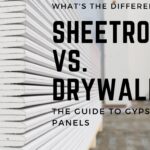Do you really need to prime drywall before painting? And if drywall primer is absolutely necessary, how do I do it?
It looks like you have an important painting project coming up, and you want it to turn out nice. So let me help you out with your concerns about priming drywall.
Let’s take it one step at a time.
Do I Need to Prime Drywall Before Painting?
The short answer is yes, you should prime drywall before painting. For two simple reasons.
- The drywall mud compound and the exposed paper on a sheet of drywall are porous. But the paint is absorbed at different rates so your walls will “flash” if you don’t equalize the two materials. Your final new coat of paint won’t look smooth and uniform if you don’t prime the walls first.
- When you equalize the drywall mud and the drywall paper, the final paint coats won’t soak into the drywall. You can use fewer coats of paint if you prime your walls first.
Even though priming drywall before painting might seem like an extra step, it actually saves you work.
It might seem counterintuitive, but when you prime drywall first, you get a better-looking finished product and it’s less work.

What Are The Steps to Prime Drywall For Painting?
Hopefully, I’ve already convinced you that priming drywall is a wise decision. Let’s look at a few simple steps to help you through the process.
1. Touch-Up Walls and Fix Any Cracks or Dings
Inspect the condition of the drywall surface and fix any dings, holes, cracks, and gaps. You can use fast-drying joint compound with a drywall knife and be done in no time flat.
Just let the compound dry completely before moving on to the next step.
If you only have a few minimal damaged areas, small cracks, screw pops, or tiny dings, fast-drying spackle might be all it takes.
Remove all furnishings and items you wouldn’t want to be covered in drywall dust or paint speckles. Install poly over any windows or openings to help control dust. Use dropcloths over the flooring.
Also, check for all drywall screw heads and nails so they are completely covered with joint compound.
2. Lightly Sand The Repaired Areas
Now that you have a dry joint compound and any cracks evenly filled, gently sand the compound so your wall is perfectly smooth.
Take your time sanding, if the surface isn’t perfectly even and smooth, it will show through the final coat of paint. Patience!
After you have everything sanded flat, lightly brush the drywall dust off the walls.
If you leave sanded drywall dust, it will get rolled into the paint and you may have chunks in your freshly painted wall.
3. Apply One Coat of Primer on Drywall
Roll or spray one coat of water-based latex primer on the drywall. A light coat is all it takes, no need to overdo it.
The required temps for primer is between 50 degrees and 90 degrees. With 50% humidity, a light coat of primer should dry within 30 to 60 minutes.
Let the primer dry completely before applying the finish coats of paint.
What Is The Best Paint For Priming Drywall?
Depending on the finish paint colors, there are several options for priming drywall. Here are a few of my favorites.
1. USG Sheetrock Brand First Coat White Flat Latex Primer
To minimize flashing and joint banding, apply USG Brand First Coat Primer with a brush, sprayer, or roller.
USG First Coat Primer Features
- Fast drying in less than 30 minutes.
- Cost-effective solution for a thin primer coat that creates uniformity in the final coat.
- Be sure the surface is clean, dry, and free of grease or oil.
- If using a roller, nap should not be greater than 1/2″.
- Coverage of 180 – 200 square feet per gallon.
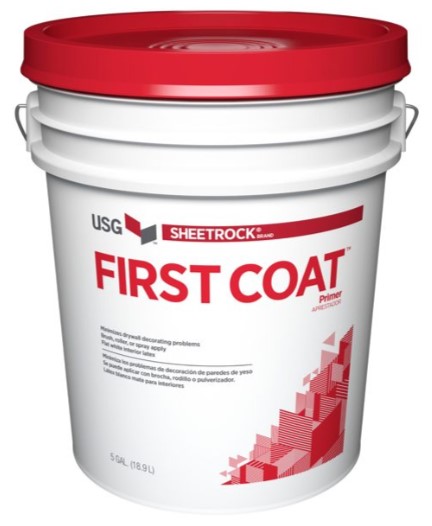
2. Kilz PVA White Interior Drywall Primer
Kilz is designed specifically for new drywall under low sheen and flat paint.
Kilz PVA Primer Features
- Coverage of 300 to 400 sq. feet per gallon.
- With 50% humidity, dries in 30 minutes.
- Buy Kilz PVA in 5-gallon buckets or single-gallon cans.

Other drywall sealer and primer brands I would recommend –
How Many Coats of Paint for Drywall Primer?
You only need one coat of primer paint over drywall. After your light primer coat of paint, you will need two more finish coats of wall paint to finish the job.
Using primer not only gives a better-finished product, but it saves money because your more expensive finish paint gets better coverage and goes on the wall smoother when the primer is used.
So it’s a total of three coats of paint, in most cases. One coat of primer, and two finish coats of your desired finish paint color.
What Is Latex Primer?
Latex primer is water-based, and alkyd primer is oil-based. Latex primer is perfect for drywall, it’s fast drying and contains less VOCs. It’s also easier to clean up after using latex primer.
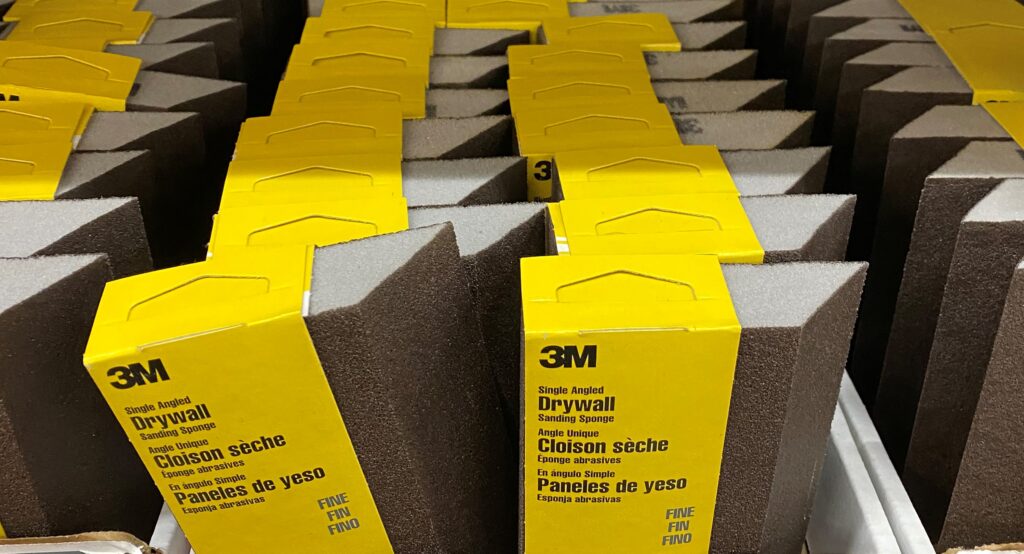
What Is Tinted Primer for Drywall?
It’s always a wise choice to tint the primer, especially if you have a dark finish paint color.
You will have better coverage on your final two coats of paint using a tinted primer. This could save you a decent amount of money, depending on the quality, and price, of the finish paint.
Mix up to 2 ounces of tint color per one gallon of primer.
There is not much cost savings between tinted primer and standard finish paint. But when using premium paint, tinted primer can deliver considerable savings.
Tinted primer costs about $20 per gallon. If you are spending $70 to $100 per gallon on premium paint, then one primer coat at $20 per gallon can save big money on a large project.
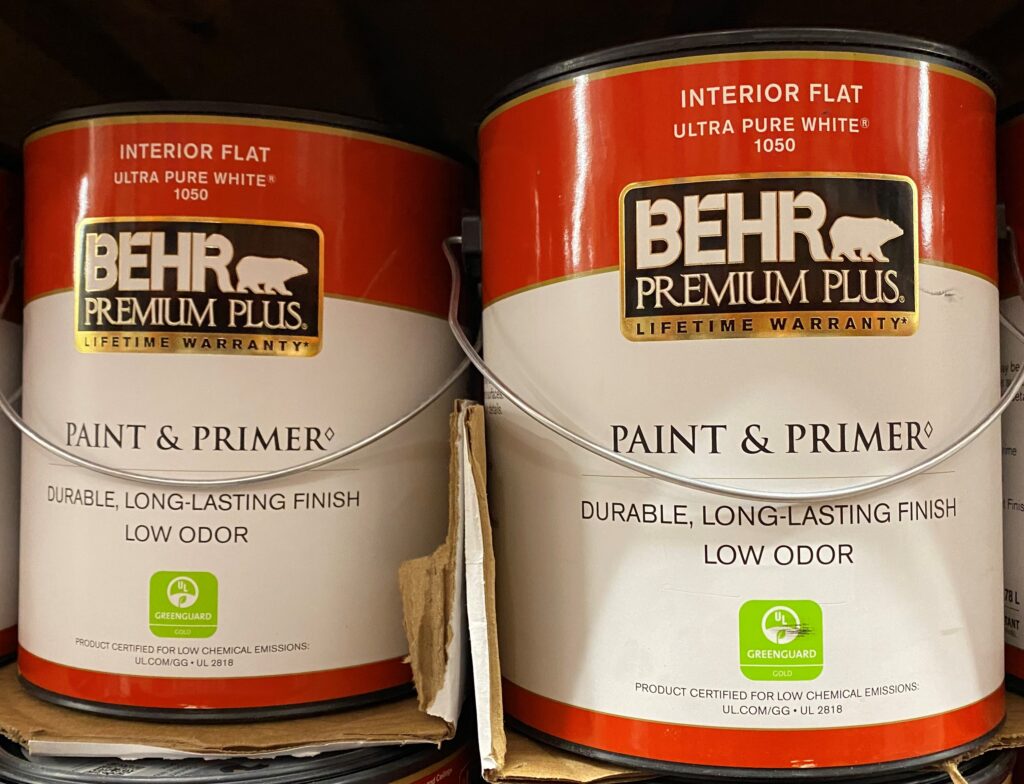
Should I Skim Coat Before I Prime Drywall?
There are times when it makes sense to skim-coat the entire drywall surface for a level 5 finish before priming.
A. When the surface is so rough and you need a complete skim coat to smooth it out. Or if you are covering old orange peel, knockdown, or popcorn ceiling texture.
B. If you want zero possibility of seeing tape joints, screw holes, nail pops, or wall flashes showing through your final top coat painted wall.
C. If your space is subject to direct natural sunlight, or if you have very dark paint colors selected, it might make sense to skim coat a level 5 finish rather than a level 4 drywall finish.
Another option is a premium primer for rough surfaces such as brick, plaster, stucco, or masonry.

Should I Use a Sprayer to Prime Drywall?
You can absolutely use a sprayer for primer paint. It’s a great option for large projects, but not necessary.
With an airless sprayer, I would recommend sprayer tips of .017″ to .021″ and a 60 mesh filter.
Sprayers are great for walls and ceiling primers, and if you have trim and doors to prime, a sprayer is a handy piece of equipment.
For smaller jobs, a 3/4″ nap roller works great.
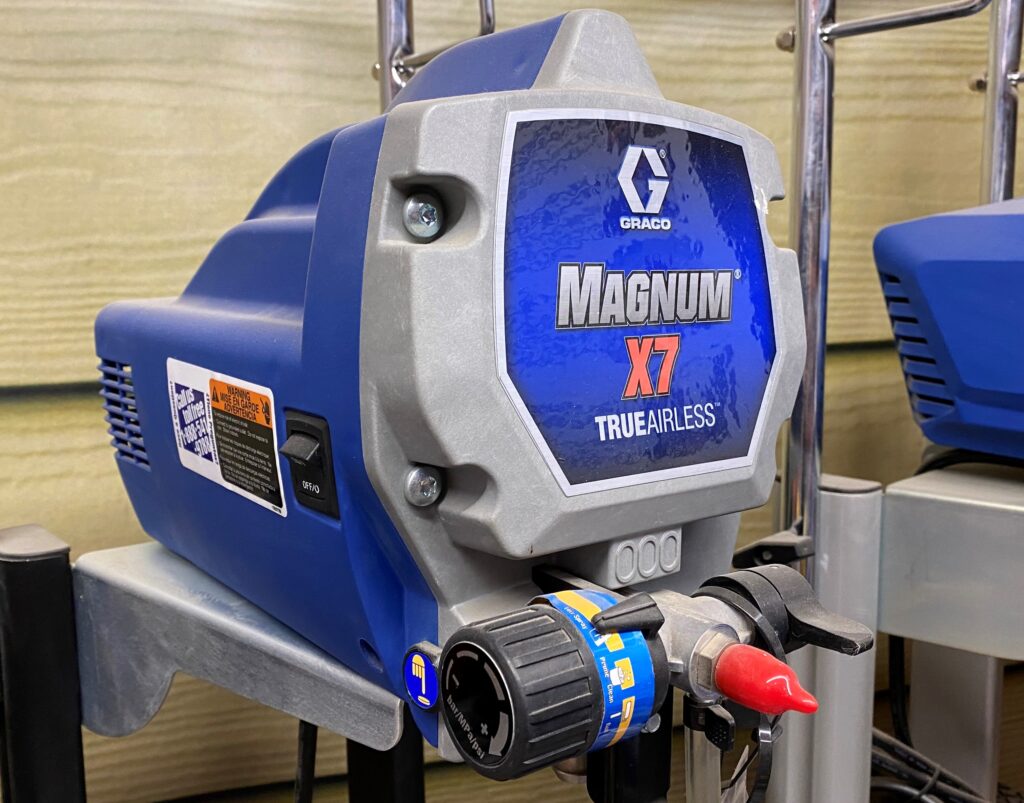
Behr Paint and Primer – Home Depot
Graco Sprayer Pricing – Home Depot



